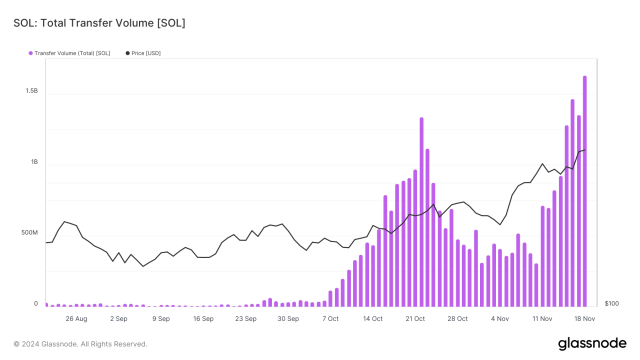
Explore the inner workings of a cyberattack, and understand its stages and techniques to strengthen cybersecurity defenses.
Cyberattacks have emerged as a serious threat to people, organizations and governments in today’s digitally connected world. A cyberattack is a malicious attempt to exploit vulnerabilities in computer systems, networks or software for nefarious purposes. Understanding the anatomy of a cyberattack is essential for individuals, businesses and governments to develop effective cybersecurity strategies.
To shed light on the changing environment of cyber threats, this article will discuss the essential elements of a cyberattack, and the stages involved in phishing and ransomware attacks.
The stages involved in a cyberattack
Reconnaissance
The attackers gather data on the target during the reconnaissance phase. To find potential vulnerabilities, targets, and important assets, they employ a variety of tactics and engage in active or passive reconnaissance.
Active reconnaissance involves scanning networks for prospective access points, whereas passive reconnaissance in a cyberattack involves gathering information about the target without directly engaging with its systems or networks.
Weaponization
Once the attackers have located their targets and weak points, they weaponize the attack by writing malicious code or taking advantage of already-known weaknesses. This frequently entails developing malware that can harm or gain illegal access to the target system, such as viruses, trojans, or ransomware.
Related: Top 7 cybersecurity jobs in high demand
Delivery
The malicious payload must now be delivered to the target. Attackers employ a variety of techniques to infect unsuspecting victims with malware, including phishing emails, harmful links, infected attachments and watering hole assaults.
Exploitation
During this phase, attackers use the flaws in the target network or system to obtain unauthorized access. They use security flaws, unpatched software or shoddy authentication procedures to access the target.
Installation
Once the attackers have access to the target system, they install the virus to keep it persistent and under their control. They can also increase their credentials to get more advanced and lateral network access.
Command and control
Attackers create a command and control infrastructure to keep in touch with the compromised systems. This is known as command and control (C2). This enables them to communicate, exfiltrate information and covertly carry out their nefarious actions.
Actions on objective
After seizing control of the target system, attackers move on to completing their primary goals. This might entail data theft, data alteration, requests for ransom or the launch of additional assaults against different targets.
Covering tracks
To prevent detection and keep their foothold, attackers hide their existence in the compromised systems by deleting logs, wiping out evidence of their activity and disguising their presence in the logs.
Understanding the anatomy of a phishing attack
A phishing attack is a type of cyberattack in which attackers use social engineering techniques to deceive individuals or organizations into divulging sensitive information, such as login credentials, financial details, or personal data.
For instance, an attacker can remotely control an infected computer by installing remote access trojans (RATs). After deploying the RAT on a compromised system, the attacker can send commands to the RAT and retrieve data in response.

The attackers often impersonate trusted entities, such as banks, online services or colleagues, to gain the victim’s trust and manipulate them into taking specific actions that compromise their security. The stages involved in a phishing attack include:
- Reconnaissance: Attackers research and identify potential targets — often through social engineering or web scraping — to collect email addresses and personal information.
- Weaponization: Cybercriminals craft deceptive emails containing malicious links or attachments designed to look legitimate, enticing victims into clicking or downloading them.
- Delivery: Phishing emails are sent to the targeted individuals or organizations, tricking them into opening malicious links or attachments.
- Exploitation: When victims click on malicious links or open infected attachments, the attackers gain unauthorized access to their systems or harvest sensitive information.
- Installation: The attackers may install malware on the victim’s device, such as keyloggers or spyware, to steal credentials and monitor activities.
- C2: The attackers maintain communication with the compromised systems, enabling them to control the malware remotely.
- Actions on objective: Cybercriminals may use stolen credentials for financial fraud, gain unauthorized access to sensitive data, or even launch further attacks against other targets.
- Covering tracks: After achieving their objectives, attackers may attempt to erase evidence of the phishing attack to avoid detection.
Related: Top 7 Wall Street movies you must watch
Understanding the anatomy of a ransomware attack
A ransomware attack is a type of cyberattack in which malicious software, known as ransomware, is deployed to encrypt a victim’s data or lock them out of their computer systems or files. The attackers demand a ransom payment from the victim to provide the decryption key or restore access to the encrypted data.

- Reconnaissance: Attackers identify potential victims based on their vulnerabilities, often through automated scans of open ports and exposed services.
- Weaponization: Cybercriminals package ransomware into malicious software that encrypts the victim’s data and demand a ransom for its release.
- Delivery: The ransomware is delivered via various methods, such as infected email attachments or malicious websites.
- Exploitation: Once the victim’s system is infected, the ransomware exploits software vulnerabilities to encrypt the files and render them inaccessible.
- Installation: The ransomware gains persistence on the victim’s system, making it difficult to remove without the decryption key.
- C2: Ransomware communicates with the attacker’s server to provide the decryption key after the ransom is paid.
- Actions on objective: The objective is to extort the victim by demanding a ransom payment in exchange for the decryption key to recover the encrypted data.
- Covering tracks: Ransomware attackers often cover their tracks by using encryption and anonymizing technologies to avoid detection.
Understanding the anatomy of a cyberattack is crucial to developing effective cybersecurity measures. By recognizing the stages involved in a cyberattack, individuals and organizations can proactively implement security controls, educate users about potential threats, and employ best practices to defend against the ever-evolving landscape of cyber threats. Cybersecurity is a collective responsibility, and with vigilance and proactive measures, one can mitigate the risks posed by cybercriminals.

You can get bonuses upto $100 FREE BONUS when you:
💰 Install these recommended apps:
💲 SocialGood - 100% Crypto Back on Everyday Shopping
💲 xPortal - The DeFi For The Next Billion
💲 CryptoTab Browser - Lightweight, fast, and ready to mine!
💰 Register on these recommended exchanges:
🟡 Binance🟡 Bitfinex🟡 Bitmart🟡 Bittrex🟡 Bitget
🟡 CoinEx🟡 Crypto.com🟡 Gate.io🟡 Huobi🟡 Kucoin.




















Comments